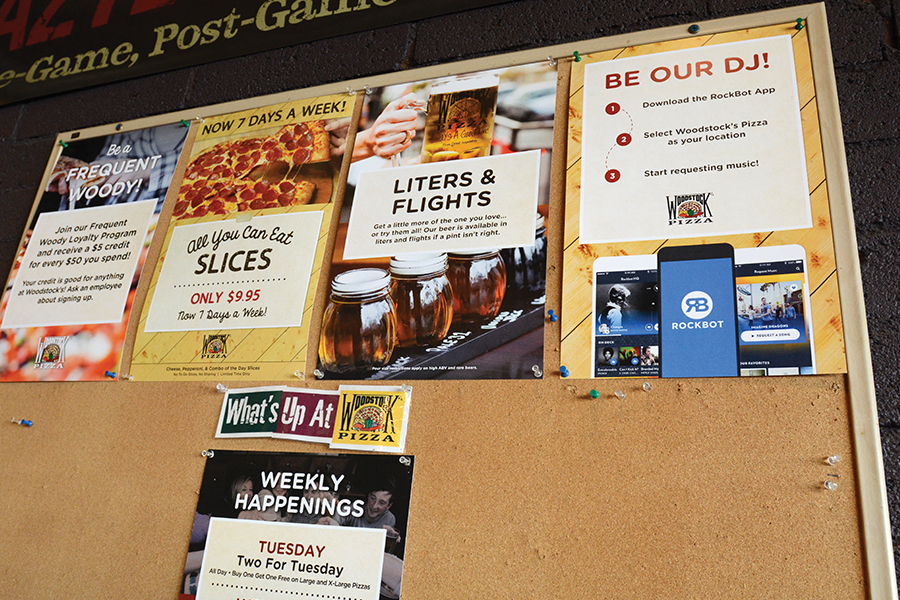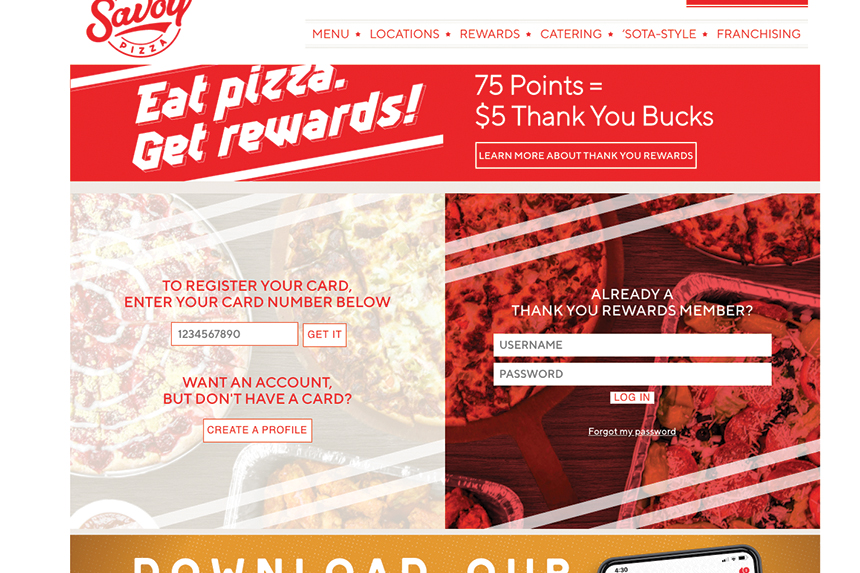Leveraging Loyalty
Mike Burns wants loyalty
When the veteran restaurant industry executive took the helm of fast casual pizza chain &pizza earlier this year, overhauling the 55-restaurant chain’s tech stack, including its loyalty program, was among his top priorities.
While &pizza had an existing loyalty program, it relied heavily on discounting and mass texting and was falling short of its potential. Burns knew it could work better, particularly at generating repeat visits, by becoming more dynamic, seamless and unique.
Burns leveraged his existing relationship with Thanx, a prominent loyalty and guest engagement platform for restaurants, and focused on “building loyalty organically.” He and his team adopted a quirky and memorable loyalty program name – the Dead Presidents Club – aligned with the brand’s counterculture vibe and Washington, D.C. roots. They created a redemption program featuring both food and merchandise and developed random surprises and VIP experiences. They initiated A/B testing to assess what efforts propelled results. Within four months of its launch, Burns saw results as &pizza scored a five-point swing in sales.
“If you’re doing loyalty right, it should prompt repeat visits and build a dedicated fan base for the brand,” Burns says.
In a competitive restaurant landscape, a loyalty program is becoming an all-important tool for restaurants to drive repeat visits.
“A loyalty program is crucial because it gives your high-value guests a compelling reason to dine with you more often,” Thanx vice president of marketing Emily Rugaber says. “It’s why so many are looking to ramp this up.”
Building return visits with loyalty
Citing years of data, Paytronix, a leader in guest engagement for restaurants, finds adding a basic loyalty program creates an 18- to 30-percent increase in spending and visit frequency among program members. That’s enticing, of course, but merely having a loyalty program isn’t enough. To optimize a program and woo repeat visits, strategy and thoughtful action matters, which is why savvy restaurant operators take these steps:
Create a differentiated loyalty program.
Loyalty programs have been around for decades and the old-school “punch card” method – buy 10 pizzas and get a free large pizza – fails to inspire in contemporary times.
“Customers don’t want to wait until their 10th visit to see the value of the program,” Paytronix senior strategist Julia Bigwood says.
Shrewd restaurant loyalty programs create differentiation through tiered levels allowing members to earn rewards more frequently and, even more, choose the rewards they want. Potential rewards might include complimentary appetizers or desserts, merchandise, exclusive access to new menu items or VIP experiences like a special beer and pizza pairing event.
With the Dead Presidents Club at &pizza, members earn coins with purchases. They can then redeem coins for both food and merchandise, including irreverent – and undeniably unique – t-shirts like Abraham Lincoln sporting a mohawk or George Washington with a nose ring and gold teeth.
Choice and uniqueness, Bigwood notes, helps generate excitement and return visits.
Personalize offers to entice returns.
Diners are individuals, which is why blasting out one-size-fits-all messages rarely achieves objectives. Today’s consumers, who regularly see personalized recommendations of television shows, books or footwear they might like based on past history, expect tailored communications created just for them.
Bigwood, in fact, calls “driving the right offers to the right people at the right time” the bread and butter of loyalty.
Pizzerias can learn about their customers and craft relevant, personalized offers for them by leaning into the personal information members provide upon loyalty program registration as well as the purchase history they build up thereafter.
With customer data in hand, pizzerias can then design targeted, focused messages to invite a return. Such communications might include: the traditional birthday or anniversary free dessert offer; an introductory reward for the new enrollee to use on their second visit to the restaurant; or early access to a returning LTO menu item for loyalty program members who previously ordered the item.
“We want to retain our customers and make it compelling for them to keep coming in,” Burns says.
Make the loyalty program seamless for all.
Too often, restaurant loyalty programs are clumsy and difficult to interact with, which makes it easy for customers to discontinue use and dine elsewhere. From signing up and earning points to redeeming rewards, Rugaber says loyalty programs “should be easy, intuitive and quick.”
At &pizza, all customers using the company’s mobile app are automatically enrolled in the loyalty program – and 90 percent of loyalty customers have their credit card on file. Whenever they use their credit card for an &pizza purchase, they earn coins. There’s no giving their phone number or name and the friction-free process is something customers appreciate, Burns says.
The seamless experience should also extend to the operational side as well. At &pizza, Thanx talks to the restaurants’ point-of-sale and online ordering platforms, so there are no extra steps required of store staff. This frees staff to focus on service, speed and hospitality, some of the most important ingredients to stimulating return visits.
Evolve the loyalty program.
In too many cases, Rugaber says operators launch their loyalty program and then … that’s it. The program never changes and becomes rote, predictable and static. There are no exciting rewards like secret menus to keep things exciting or incorporating tech-fueled advancements to make things more seamless or personalized for guests.
“Historically, a loyalty program is a check-the-box item, but it should always be evolving and finding ways to grow,” Rugaber says.
Rugaber suggests routinely testing different options to see what resonates. For instance, a free dessert offer might spur more traffic from loyalty members than a free appetizer, so the more cost-effective option could drive the better outcome.
Leveraging automation, a pizzeria might send “almost there” messages to nudge guests just shy of a reward to return. In its Loyalty Trend Report 2024, Paytronix recommends sending these offers via e-mail and including images of the reward guests will receive alongside their current point balance. By simply sending that reminder message – with no additional incentive – Paytronix helped one quick-service brand achieve a 5.5 percent visit lift.
DANIEL P. SMITH Chicago-based writer has covered business issues and best practices for a variety of trade publications, newspapers, and magazines.









